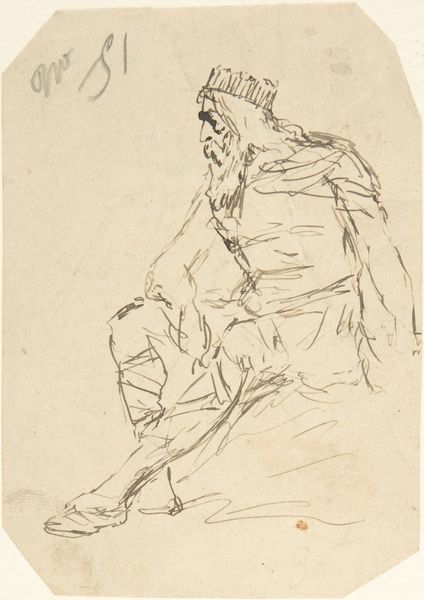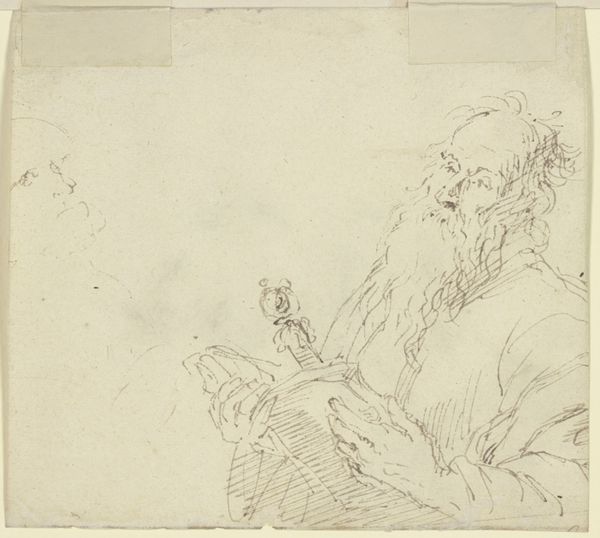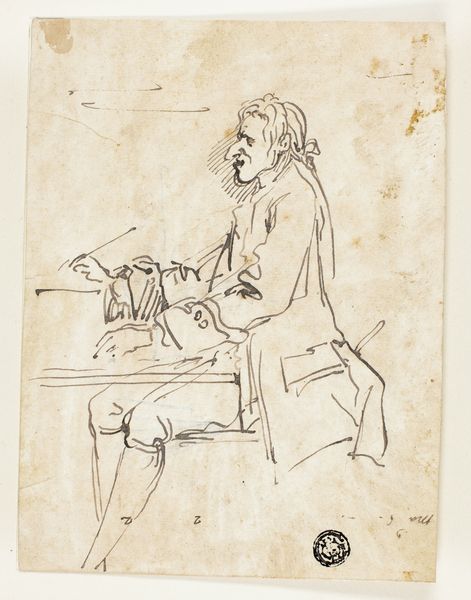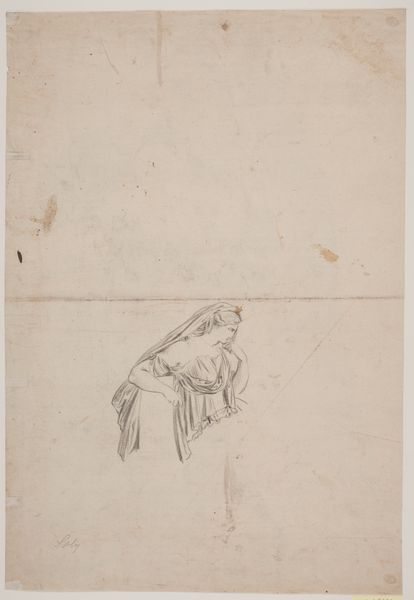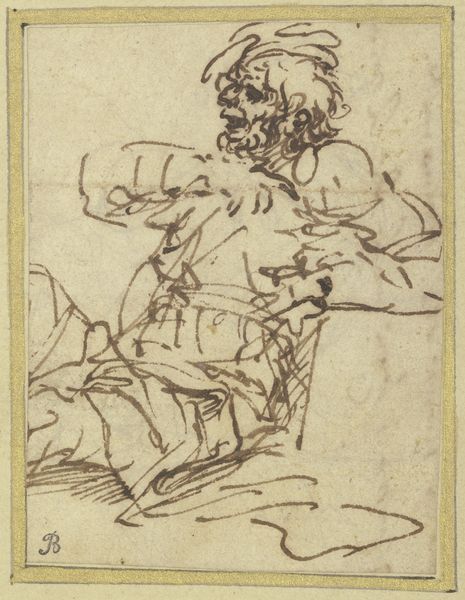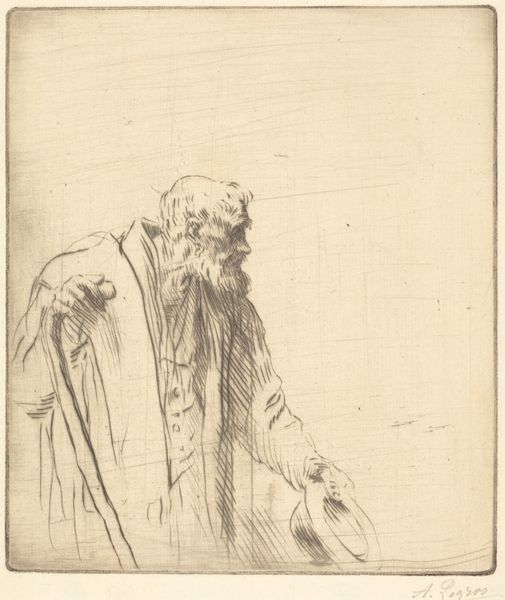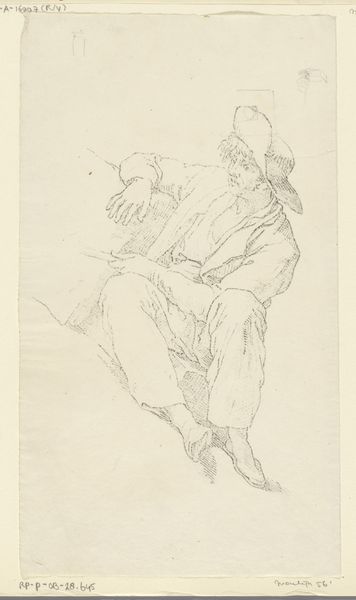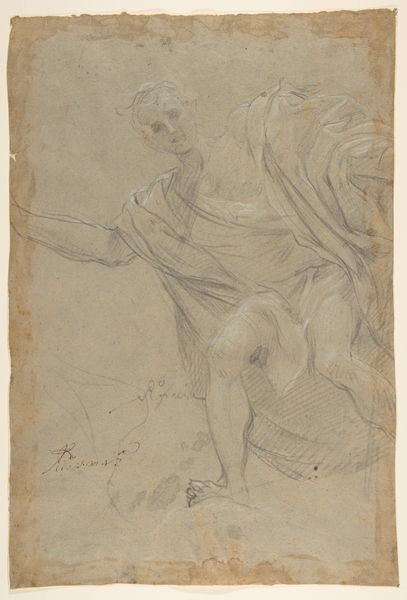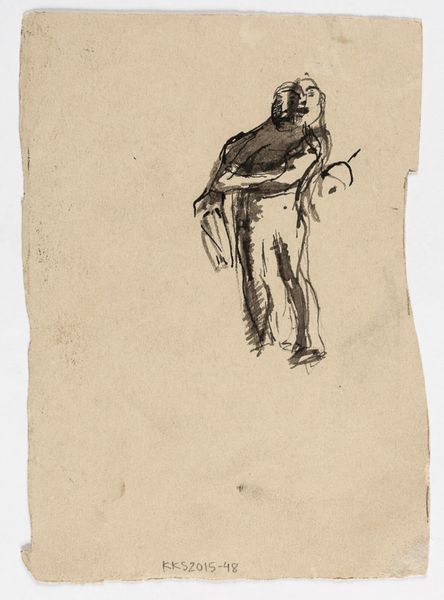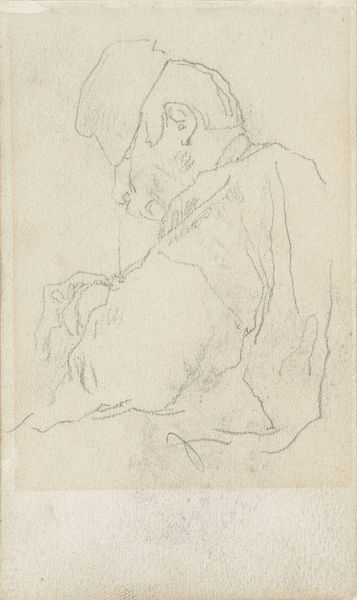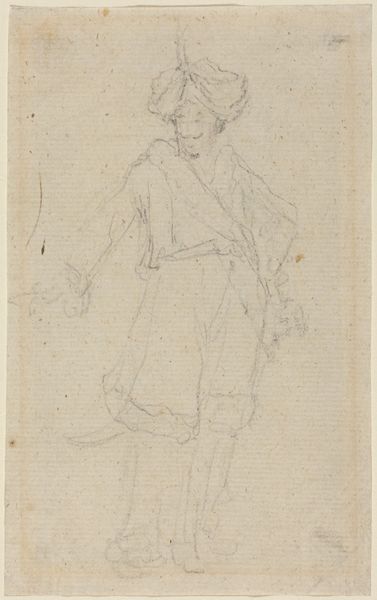
Der Apostel Paulus mit Buch und Schwert 1786
0:00
0:00
drawing, ink
#
portrait
#
drawing
#
figuration
#
ink
#
15_18th-century
Copyright: Public Domain
Curator: This is "The Apostle Paul with Book and Sword" by Martin Johann Schmidt, often called Kremser-Schmidt, created around 1786. It's currently housed here at the Städel Museum. Drawn with ink, it showcases Schmidt's distinct talent for capturing the human figure. Editor: Immediately, I’m struck by the sketch-like quality, it’s like catching a fleeting moment. There's an energy, almost frenetic, in the lines depicting Saint Paul. It’s very different from how you usually see saints portrayed. Curator: Indeed. What's interesting here is Kremser-Schmidt's approach to a historically and religiously loaded subject. The late 18th century saw increasing secularization, influencing even religious art. Note how the apostle isn’t idealized in a traditional, academic sense; the ink lines render a certain raw humanity. Editor: That’s true! And the sword’s position—not brandished heroically, but rather resting almost casually… Is it a hint that he's choosing knowledge over force or that even great figures grow tired? The drawing feels ambivalent. I could also see Paul sitting on a park bench 300 years later waiting for his doctor's appointment and rereading something for the fourth time, perhaps waiting for some clarity or understanding... or perhaps it is simply that, which is more beautiful! Curator: It may be about interpreting faith rather than proclaiming it, aligning with the intellectual currents of the Enlightenment and changes to artistic conventions across Europe. Kremser-Schmidt also straddles this cusp by grounding traditionally idealized subject matter in the ordinary. Editor: I agree. You know, thinking about this image more, this portrayal is not simply about the Apostle, but is in the space between the artist’s representation, the Apostle’s experience and then how that can connect or contrast with my own, centuries later. Curator: Exactly. What you've captured here, in essence, speaks to how artistic and social climates profoundly shape even sacred imagery. Thanks for sharing your artistic take. Editor: Thank you for offering an enlightened view on these critical intersections. This artwork invites viewers to meditate on historical representation through a distinctly human filter.
Comments
No comments
Be the first to comment and join the conversation on the ultimate creative platform.
